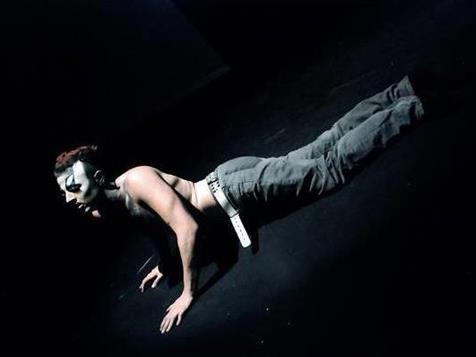August 2015 | Vol 24 Issue 3 | Link Disability Magazine
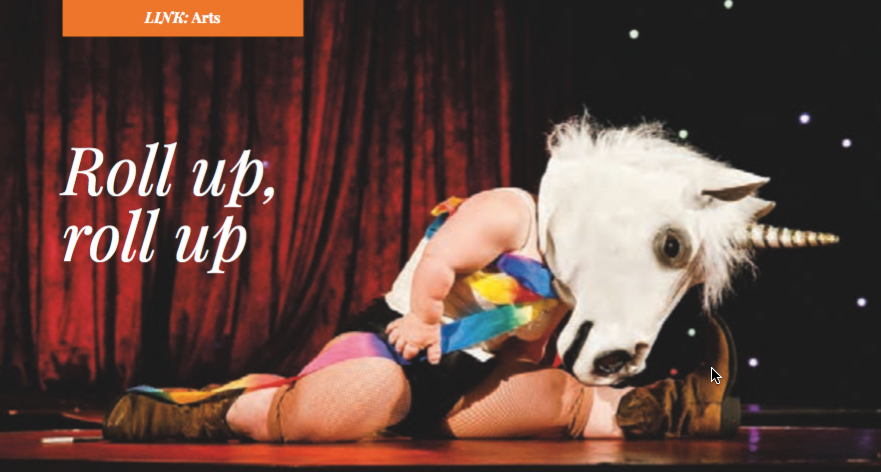
The Fair Ground Project is redefining circus to include people with disability, writes founding member Kim Kaos.
In February 2015, Australia got its first taste of a circus performance by professional performers with disabilities. The Fair Ground Speakeasy was a one-off show, in Circus Oz’s Melba Spiegeltent, to launch The Fair Ground Project. It was a dynamic example of integrated circus with three able-bodied performers and five performers with disabilities.
When talking about circus and disability in the same breath you can almost see questions circling people’s heads. In the collective imagination circus is about super-fit bodies performing superhuman feats that flirt with risk. Trying to insert images of performers with disabilities into that vision can be challenging.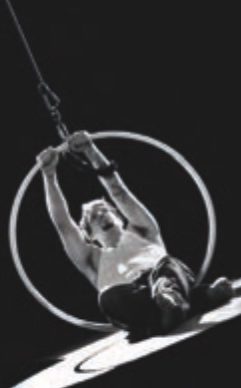
The growth of contemporary circus as an artform has meant that the basic skills of circus are being deconstructed and re-presented. Overseas, this reimagining of circus has included performers with disabilities for several years. The Fair Ground Project is helping Australia to catch up.
Founding company member Loki Rickus competed as a gymnast and trained in dance, before training with Adelaide’s Cirkidz. At the age of 18 he broke his neck falling from an aerial ring. In 2014 Loki spearheaded The Fair Ground Project after speaking at the Australian Circus and Physical Theatre Association (ACAPTA) forum.
“The Fair Ground Project receives support, but not funding, from ACAPTA and Circus Oz,” says Loki.
“Doing the Speakeasy was a way to advance the conversation about circus and disability. It was a chance to show what an integrated circus company could look like rather than just talking about it.
“A big part of The Fair Ground Project is artist-led research – I spent years training skills while able-bodied. Now I have to discover new approaches to those skills – not just because I use a wheelchair. Sometimes I can draw on training and sometimes I have to approach apparatus completely fresh. Sometimes we have to redesign the apparatus.”
What distinguishes The Fair Ground Project is that the emphasis is on creating work with experienced performers and creating professional pathways. This is a key difference to existing projects in Australia that are largely community-
based, using circus skills for recreation and expression. Circus has always been a collaborative form so able-bodied performers are well prepared, and incredibly willing, to adapt to work with artists with different abilities.
However, the inherent risk in circus means that time is a crucial factor in creating a professional best practice model for combining circus, able- bodied performers and performers with disabilities.
Fellow founding member Emma J. Hawkins says when you’re rehearsing physically demanding shows and coping with different bodies and abilities there has to be more time for set-up and recovery.
“We discovered we need to allow more time for tech and safety checks and even little things, like covering the distance between dressing rooms, backstage, and the ‘facilities’,” Emma said.
“More venues are accessible these days – for audiences – but accessibility backstage is another story.”
Emma’s involvement in circus goes back to 2004, when she was introduced to the world of physical theatre when she performed in Branch Nebula’s PlazaREAL in Sydney.
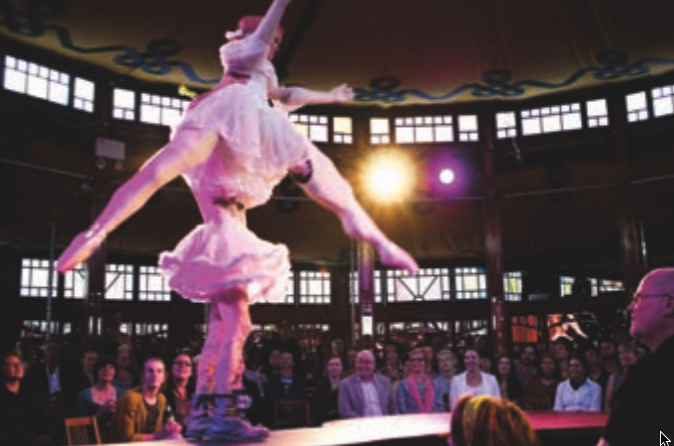 “My whole life is like being in the circus,” Emma jokes.
“My whole life is like being in the circus,” Emma jokes.
“Balancing precariously, extending my body to its upmost, climbing on ladders, stools, people, pushing, pulling, and carrying heavy objects. I’m always adapting and challenging my body to fit in to a world that doesn’t fit me.
“But seriously, I never dreamed about doing circus. I was acting, dancing, singing. When I got a job with Circus Oz I wasn’t sure what to expect but as a performer I’ve always liked to challenge myself along with my audiences. Circus was the perfect platform to do both
of those things under that big colourful tent.”
The Fair Ground Project is currently working to build a database to benefit artists with disabilities in circus. A website is also in development.
Original article appeared in Link Magazine. Not available online.
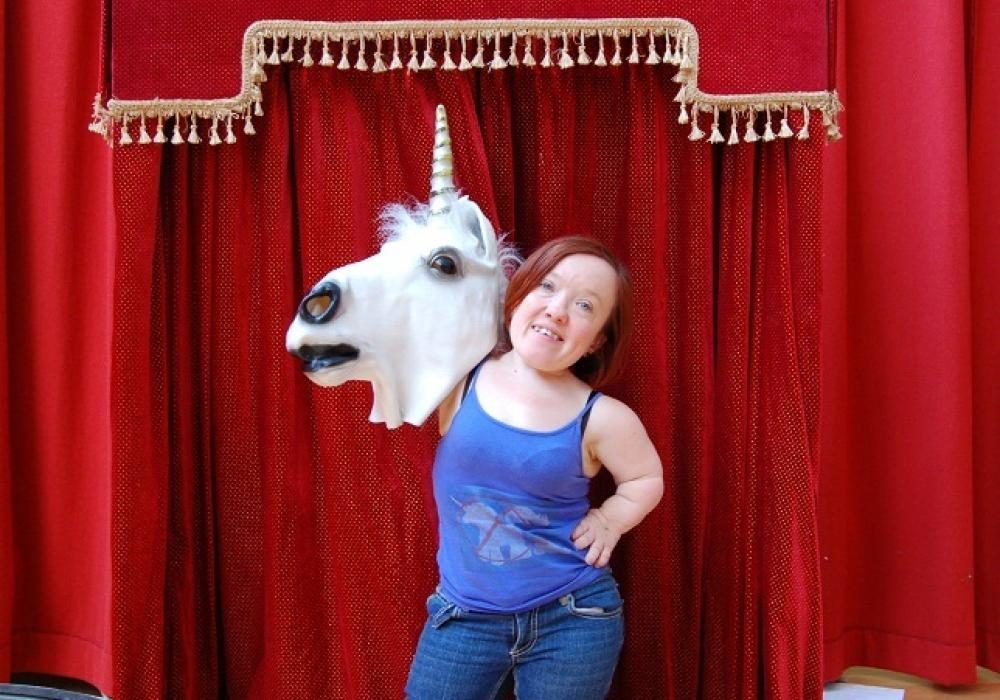
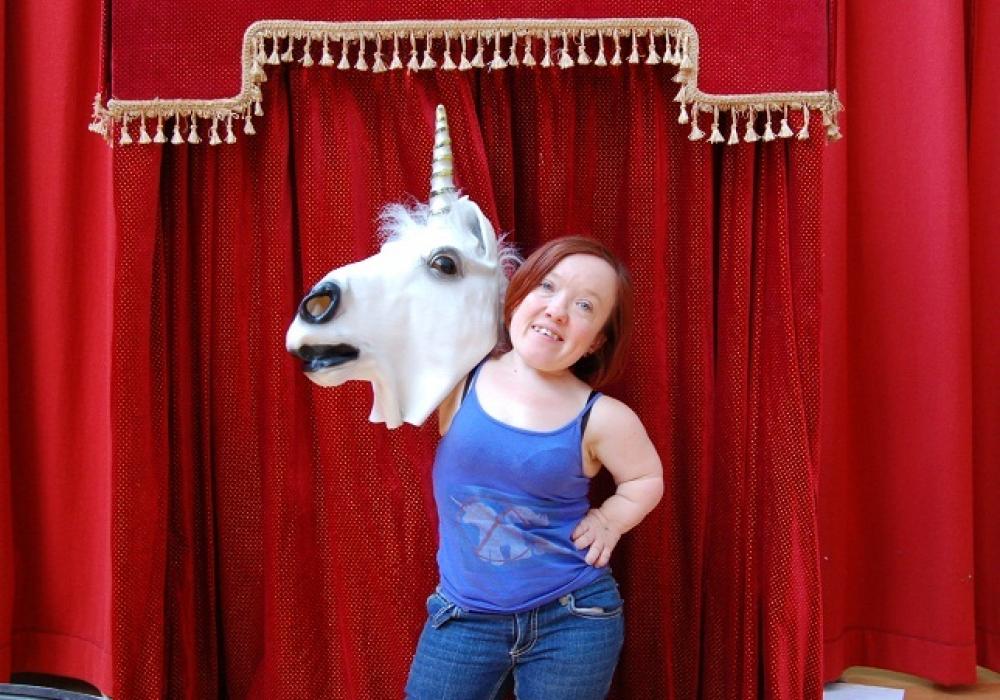


 This is Ms Hawkins’ first-ever solo show, a major milestone for any performer, though it follows a long and diverse career in entertainment. Since the age of 10, when she decided what she wanted to do with her life, her experience runs the gamut from Shakespeare to burlesque. Classical theatre was her “first love”, but she learned over time that she could use her physicality to her advantage.
This is Ms Hawkins’ first-ever solo show, a major milestone for any performer, though it follows a long and diverse career in entertainment. Since the age of 10, when she decided what she wanted to do with her life, her experience runs the gamut from Shakespeare to burlesque. Classical theatre was her “first love”, but she learned over time that she could use her physicality to her advantage. She and a short-statured friend, Kiruna Stammel, formed the Atypical Theatre Company, with the aim of creating professional and interesting work for performers with and without disabilities. Through the company, she created and starred in the award-winning “One More Than One”, a romantic dance piece about Internet dating, with a 196cms (6-foot-5-inch) Malaysian actor named Keith Lim. She then joined Circus Oz, as a tap dancer and stilt walker.
She and a short-statured friend, Kiruna Stammel, formed the Atypical Theatre Company, with the aim of creating professional and interesting work for performers with and without disabilities. Through the company, she created and starred in the award-winning “One More Than One”, a romantic dance piece about Internet dating, with a 196cms (6-foot-5-inch) Malaysian actor named Keith Lim. She then joined Circus Oz, as a tap dancer and stilt walker.